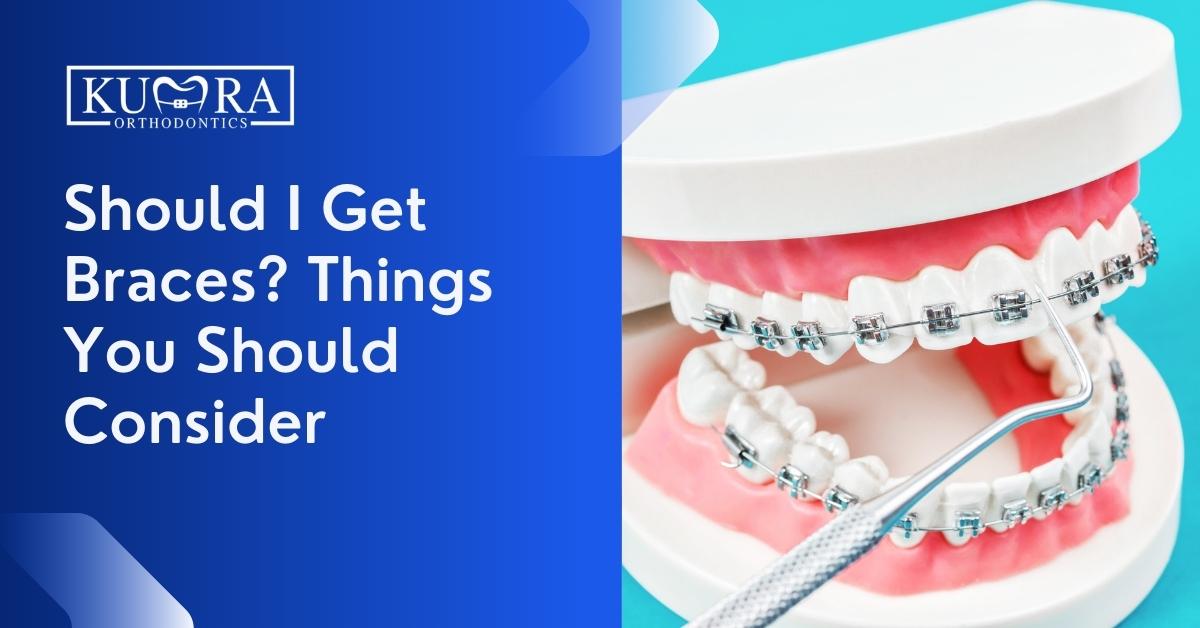Straight teeth are healthier teeth. Straight teeth are less likely to develop cavities and are less prone to discoloration, uneven wear, and fractures. Additionally, your gums are healthier, which reduces your risk of developing periodontal (gum) disease. Straight teeth and healthy gums enable you to chew virtually anything.
In this article, we will explore the answer to the question: should you get braces?
How Braces Work
Braces function by applying consistent pressure to the teeth and jaws, repositioning them, and altering the smile. The brackets bonded to the teeth secure the archwire, which exerts pressure on the teeth. Teeth gradually shift into the desired position.
Periodontal ligaments are the soft tissue that surrounds the teeth and bone. These ligaments stabilize teeth and can stretch or contract in response to tooth movement. When braces shift a tooth to the right, the right ligament compresses, and new bone grows on the left to cover the gap.
Signs You Need Braces
Your age and dental health will play a role in whether or not you require braces as an adult. According to specialists, only about a third of adults have teeth that are properly aligned. As a result, most people who opt for adult orthodontics see excellent results.
Crooked Teeth
People’s teeth might grow crooked, overlap, or be twisted for several different reasons. Teeth crowding and shifting can occur due to a person’s mouth being too small for their teeth. As a result, a person may have either an overbite or an underbite if their upper and lower jaws aren’t the same size or are deformed, leading to either an overbite or an underbite if the lower jaw protrudes forward.
Both baby teeth and permanent teeth can be crooked. Because they’re so little, baby teeth might shift into crooked positions because they don’t have enough room in the mouth to fit.
Baby teeth might become crooked or pushed out due to bad habits like sucking on a pacifier or thumb for long periods. Genetics and heredity may play a role, too.
Read More: Why Do Teeth Get Crooked?
Gaps Between Teeth
Many people’s dental problems can be corrected with orthodontic therapy, including gaps in their teeth. Other times, the only issue is the size of the opening. There’s more to a gap-toothed smile than looks!
Gaps can form at any time in your life, resulting in poor tooth alignment since the teeth on either side of the gap have no means of preventing their movement. Bite problems, face pain, and other dental concerns might result from this. Not all of the gaps, on the other hand, are cause for alarm. It can be nothing more than a nuisance for little gaps that aren’t otherwise a problem. A gap that is excessively large or that is surrounded by problematic teeth might create new issues or exacerbate existing ones in adults. The appearance of a patient may also be a motivating factor for some individuals to seek therapy, even if they are otherwise healthy.
Patients who have a gap between their teeth may opt for orthodontic treatment, such as braces, to close the gap. In many cases, you’ll need to wear braces on both your upper and lower teeth, regardless of how the gap developed. That’s because shifting a single tooth impacts the rest of your mouth.
Related: Is Invisalign Treatment Effective in Closing Tooth Gaps?
Difficulty in Biting
Make sure you can chew your meal without difficulty. If you find yourself frequently biting into the side of your cheek, you may have misaligned teeth. An overbite occurs when your upper teeth protrude past your lower teeth. In the same way, if your lower teeth extend beyond your upper teeth, you have an underbite. Crossbite occurs when teeth on both sides of the upper and lower jaws are not aligned properly. If you find yourself in any of these scenarios, you’ll likely benefit from braces.
Jaw Pain
If you notice cracking, clicking, or soreness in your jaw, it may be because your teeth are misaligned. Despite the ease with which jaw pain might be written off on occasion, a trip to the orthodontist is important. Pain in the jaw can indicate a more serious problem that must be addressed immediately. When in doubt, it is always best to seek the opinion of a dental expert.
Your dentist or orthodontist will ask you questions about your health, perform a clinical examination, conduct a digital scan of your teeth, photograph your face and teeth, and order mouth and head X-rays. They will develop a treatment plan using this information.
Needing an orthodontic appointment?
Visit Kumra Orthodontics Washington DC or Kumra Orthodontics Stafford, VA, and request an appointment with us!
Other Factors to Consider
Breathing Issues
Breathing might be affected by a misaligned set of teeth, as well.
Often, these problems force you to inhale and exhale through the mouth. Snoring and other sleep-related issues can result from this. It’s especially concerning in children because it’s been shown to interfere with bone development.
To keep future issues at bay, it’s important to have them fixed as soon as possible. This can be remedied by wearing braces, which realign the teeth, allowing the tongue to rest more comfortably. As a result of this, breathing through the nose is more efficient.
Commitment
To wear detachable braces, you need to be completely dedicated. As a final point, you must be adamant about wearing your retainers. While it may seem obvious, many people neglect their orthodontic treatment. As a result, it will take you longer to achieve the outcomes you desire. Wearing your retainers as frequently as prescribed by your dental professional will ensure that your time and investment in braces will not go to waste. That’s why wearing braces is so crucial, and you should be willing to wear them for however long your dentist instructs you to.
Types of Braces
As time goes on, braces have become better, but they still employ the same method. Fortunately, a wide variety of braces are available nowadays.
Metal braces are the most common type of braces. Metal brackets are connected to teeth and tightened with a wire in this orthodontic treatment method.
Ceramic braces are an option if you prefer a more discreet appearance. They function in the same way as traditional metal braces in terms of their effectiveness. Their appearance is what sets them apart.
When they’re white like the teeth, they’re practically undetectable. These are an excellent choice for people who don’t want their braces to be apparent.
A third alternative that’s virtually undetectable is lingual braces. Unlike metal and ceramic braces, this variety is affixed to the rear of the teeth instead.
Unlike the other varieties, Invisalign can be removed. It is possible to straighten your teeth by wearing clear trays over your teeth. Cleaning your teeth will be easier if you use this method. All these alternatives make it simple to select the ideal solution for you.
Read More: Kind of Dental Braces and What’s Best For You?
Contact Kumra Orthodontics to learn more about how do you know you need braces
Taking care of your teeth and gums can impact your overall health. It’s a safe bet that if your tongue isn’t feeling well, your entire body will be. People who use braces are often aware of their advantages. They can help you obtain a picture-perfect smile while also addressing the problems beneath it. To put it another way, it’s a worthwhile investment.



